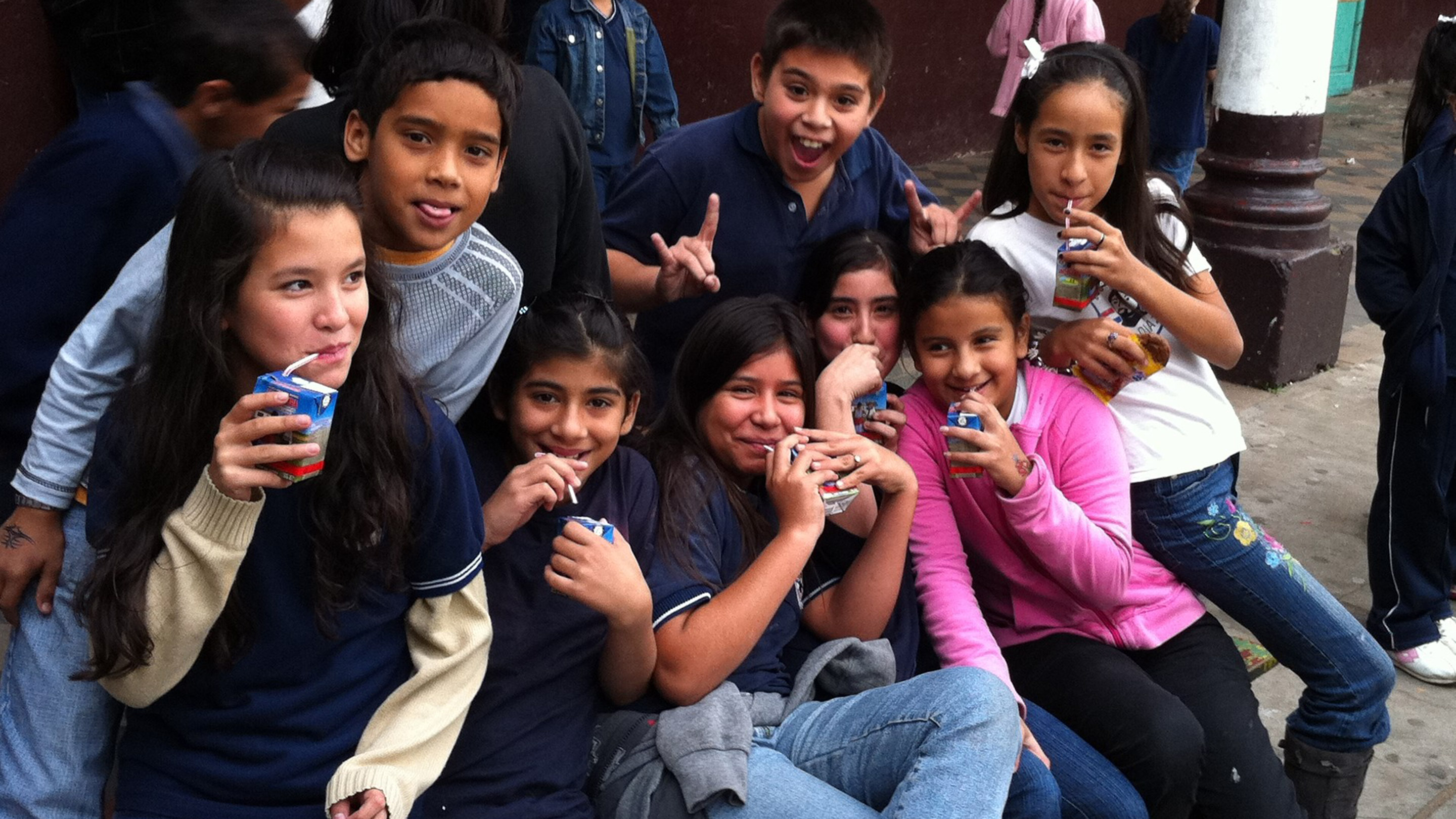Overcoming distribution and malnutrition challenges in the Paraguay school milk programme
Paraguay has a long running school milk programme (SMP) to address challenges related to malnutrition and social safety protection. The SMP has overcome infrastructure challenges so that children country-wide can have access to safe nutrition whilst creating a link to local agriculture development.
Challenge
According to the World Health Organisation, 1.55% deaths that occur in Paraguay can be attributed to malnutrition[1], which is linked to poverty, low education level and insufficient access to health care. 32% of the population live in poverty with 17% considered to be in extreme poverty. 25.5% of the population that live in poverty are undernourished. Statistics reveal that 60,000 of 150,000 children born in Paraguay are born into poverty.[2]
In 2009, 14.1% of pre-school children had vitamin A deficiency. 30.2% of pre-school children in Paraguay suffer from anaemia and 14,1% from vitamin A deficiency according to a report from the Micronutrient Initiative presented in 2009.[3]
According to the World Bank, the investment by the government for school construction and equipment decreased considerably between 1999 and 2010 from 1% to 0.25%. Only 43.6% of schools in Paraguay had potable water. [4]
Initiative
As an important step to address these challenges, Legislation No. 1443 in 1999 and No. 1793 in 2001 were adopted so that a school feeding programme could be implemented at national level. In 2008, the Government took an important step of prioritizing milk within the programme as a vital source of nutrition with link to local agriculture development. The initiative mandates a 200ml. ration size of white milk for all children. Collaboration with the dairy processors organization (CAPAINLAC) was vital in the implementation and practical distribution of the milk in schools.
To overcome the distribution and storage challenges associated with school milk, Ultra-High-Temperature (UHT) technology is used to provide children access to safe nutrition around the country. This technology allows for a shelf life of 6 to 12 months, maintains the nutritional value and quality of the processed and packaged milk and facilitates monitoring and tracking milk consumption. The uniform nutrition provided to children by school milk can enable local stakeholders to quantify the programme’s impact.
The government budget for the SMP increased from $14.2 million US a year in 2009 to US $25.5 Million US a year in 2010 and 2011.[5] The most common practice of delivering milk to schools by most dairy processors supplying the programme is using a distributor for this function.
Value
The programme is also an important measure to support local production and processing of milk. In collaboration with CAPAINLAC, Tetra Pak and Food for Development shared best practices and cases of school milk programmes worldwide with the Ministry of Education and Culture. The importance of programme sustainability was highlighted demonstrating how the school milk can play a vital role in stimulating demand for local dairy products and sustain jobs and incomes for farmers and dairy processors. The continued and expanded investment of resources in a school milk program will ensure positive long-term impact on the economic development of Paraguay.
In 2010, the program covered 864,808 students (of the approximately 1,3 million children enrolled in school) with a ration of milk during an average of 148.6 days/year. It was estimated that providing all children enrolled in preschool, primary and secondary school (an estimated 1.5 million children) with 200ml. of milk, 180 days per year, would create a demand for 54 million litres of milk yearly.
Together with the improvement of the health status of targeted children, increased school enrolments, and classroom attendance, the programme supports the local dairy value chain.
Looking forward
The school milk programme continues to strengthen local dairy value chain development in Paraguay by providing access to markets for local dairy farmers and dairy cooperatives. In addition, the health status of targeted children will be improved by decreasing malnutrition.

[1] Paraguay - Child Malnutrition - 2022 Data 2023 Forecast 1991-2020 Historical (tradingeconomics.com)
[2] Malnutrition in Paraguay - The Borgen Project (2015)
[3] Investing in the Future: A United Call to Action on Vitamin and Mineral Deficiencies (2009)
[4] School Infrastructure in Paraguay: Needs, Investments and Costs. World Bank Study. 2016.
[5] Monitoreo a los Procesos de Contrataciones / Públicas del Programa Complemento Nutricional – 2009 / 2010.